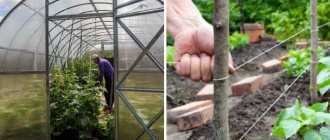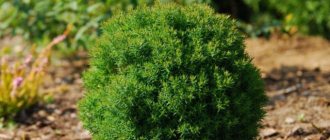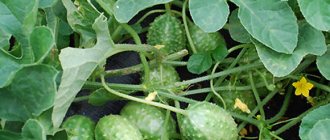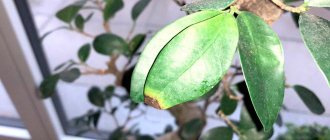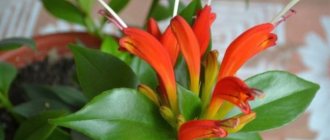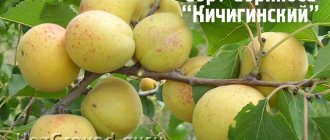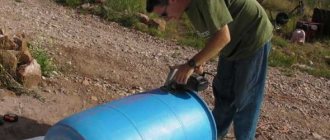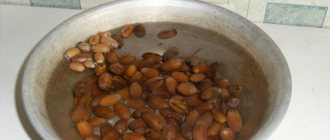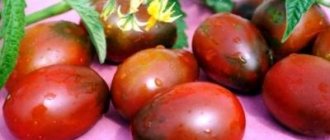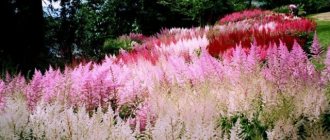Description of culture
Cherry plum is a branched tree or bush, the height of which can be 1.5-10 meters. The culture is characterized by strong roots and thin shoots of a brown-green hue. The plant has elliptical leaves. The flowers can be white or pink and appear in early May.
The tree has juicy fruits of an elongated, round or flattened shape. They come in green, pink, yellow, purple. You can see a small waxy coating on top. The bone has a round or elongated shape.
The ripening of the crop is observed at different periods of time - from July to September. Specific timing depends on the variety. The tree lives 30-50 years. Most varieties are considered self-sterile. For cherry plum to bear fruit, there must be at least 2 trees on the site that bloom at the same time.
How to fertilize in the fall
- 10 kg of organic matter (humus, compost)
- 100 g potassium
- 200 g superphosphate
All of the listed fertilizers are mixed and applied once in September-October in the tree trunk circle, 50 cm away from the plant. Cherry plum feeding in the fall is done in October.
In the first decade after planting, the cherry plum gives intensive growth, its lateral buds easily awaken, and the tops grow quickly. Therefore, cherry plum is widely used for decorative landscaping; its crown can be given any fancy shape. Abrosculptures are formed on the cherry plum.
It is best to prune in the spring . Cherry plum is prone to severe thickening of the crown, which also negatively affects the yield. Therefore, caring for cherry plums necessarily includes annual pruning in the spring.
Trimming Features
- Cherry plum bears fruit on last year's growths, fruit branches and spurs.
- Most fruits are produced on annual shoots.
Therefore, shortening annual growth will reduce the yield. All attention should be paid to crown thinning . Excess shoots, as well as poorly located crowns directed inward, must be removed. Each fruiting branch should be well illuminated by the sun.
When pruning cherry plums in the spring, shoots longer than 50 cm are slightly shortened. At the same time, numerous side branches immediately form on them. If they thicken the crown too much, then you can pinch them back in the summer until the beginning of July.
Advantages of planting on the site
Cherry plum is considered a popular crop. It has many advantages:
- Grows on almost all types of soil. However, cherry plum does not tolerate soil types that are too acidic or too alkaline.
- It takes root well and produces a harvest the following year.
- Characterized by high yield parameters. From 1 tree it is possible to obtain up to 30-35 kilograms of fruit.
- Easily tolerates hot weather.
- Some varieties ripen in late July or early August.
- It can be propagated by different methods - cuttings, grafting, layering.
- It is considered an excellent early honey plant.
- The fruits contain many vitamins, acids, and microelements.
- Actively used in cooking. Sauces, marmalade, compotes, and jam are prepared from cherry plums.
Improper planting of a plum seedling
You need to place the cherry plum in the garden in a warm corner, where there is a lot of sun and no cold wind. The cherry plum will feel very good near buildings on the south side. Here it will be protected from the wind and from frost, so its fruits will be larger and sweeter than those of other trees, and the yield will be higher.
The cherry plum can have several trunks and a spreading crown up to 13 m high. The root system of the tree is branched, but shallow, and therefore can tolerate close groundwater. The average lifespan of the crop is 30 years, but the most active fruiting occurs in the first 10 years.
Purchasing seedlings
You need to place the cherry plum in the garden in a warm corner, where there is a lot of sun and no cold wind. The cherry plum will feel very good near buildings on the south side. Here it will be protected from the wind and from frost, so its fruits will be larger and sweeter than those of other trees, and the yield will be higher.
What are the benefits of cherry plum fruits?
The value of cherry plum lies in its tasty and healthy fruits, which differ in dietary characteristics. They contain a low amount of sugars, and therefore are slightly inferior in taste to plums. At the same time, cherry plum surpasses this fruit in terms of the content of useful components.
The fruit contains many vitamins, organic acids, and microelements. The fruit also contains healthy pectin.
The optimal set of valuable components, low sugar content and low calorie content help to use cherry plum in dietary nutrition if you are overweight. The fruit can be consumed during pregnancy. It is useful for children and elderly people. Fresh cherry plum fruits help cope with vitamin deficiencies, eliminate digestive problems and circulatory disorders.
Cherry plum care
To ensure the tree grows healthy, follow the rules for caring for cherry plums.
- Watering cherry plum . Immediately after planting, and then 3-4 times per season, water each cherry plum tree in the amount of 4 buckets. Immediately after the water is absorbed, weed the soil around the tree trunks.
- Feeding cherry plum . The crop loves frequent fertilizing, however, in the first year after planting, fertilizers are not required; the amount applied to the ground during planting is sufficient. Feed the cherry plum annually with nitrogen fertilizers 3 times per season: in early spring in March, before fruiting begins at the end of May, and during the formation of buds for the next year in mid-July. In the fall, apply potassium-phosphorus fertilizers to prepare cherry plums for winter.
- Wintering cherry plum . To protect the roots from freezing, mulch the tree trunk circles to the depth of half a spade bayonet. Throw the first snow that falls on top of the mulch for additional protection. Cover the cherry tree trunk and shoots with spruce branches and burlap so that the branches do not break under the weight of snow and do not freeze when frost sets in.
- Cherry plum diseases . The crop is resistant to diseases and insect attacks, however, if signs of disease appear, promptly remove the affected areas and treat the cuts with a solution of copper sulfate.
- Formation of the cherry plum crown . Pruning cherry plums is carried out in the spring; before the buds open, the procedure is least traumatic for the tree.
Cherry plum fruits are rich in vitamins and minerals; eating them reduces the incidence of viral infections. In addition, they have a unique sweet and sour taste that children and adults will enjoy.
Choosing variety zoning
In order for the cultivation of cherry plum to be successful, it is imperative to choose the right variety of crop. To do this, it is recommended to take into account the climatic features of the region.
For the Moscow region and Central Russia
This region is characterized by quite severe winter frosts. Temperatures can reach -25 degrees. In conditions of high humidity there is a risk of cherry plum freezing. Gardeners are advised to choose varieties that can withstand such conditions.
In the middle zone it is recommended to plant the following plants:
- Tent is an early variety that produces large purple fruits. They are characterized by a sweet and sour taste. Fruiting begins after 4-5 years.
- Mara – the harvest can be harvested in early July. The fruits have yellow skin and sweet flesh.
- Lama is a hybrid variety that produces a good harvest and has excellent decorative characteristics. Thanks to this, the tree becomes a real decoration of the garden. Reddish leaves combine beautifully with ripe fruits. The plant must be protected from strong winds.
- Gold of the Scythians - the tree reaches 3 meters. It begins to bear fruit after 4 years and produces golden fruits. They are characterized by a delicate sweet taste.
- Vladimir comet - has large fruits with orange flesh. With quality care, you can get an excellent harvest.
For Siberia and the Urals
These regions are characterized by a harsh climate. Therefore, it is recommended to choose frost-resistant varieties. These include:
- Cleopatra - considered a self-fertile plant, characterized by purple fruits;
- Nesmeyana – early tree;
- Traveler - gives a good harvest;
- Mara is resistant to diseases.
Low-growing plants produce a good harvest and can easily withstand the winter provided they have high-quality shelter. A high harvest will provide complete care.
For the Altai Territory
In this region, it is recommended to plant cherry plum everywhere. Many hybrids grow in gardens. They are able to withstand severe frosts and drought. For Altai you can choose the following varieties:
- Scarlet dawn - the harvest ripens in mid-July. The plant is characterized by fruits of a rich red hue.
- Mars - cherry plum ripens in early August and has burgundy fruits.
- Almond - produces large orange fruits weighing 30 grams.
- Ruby - has beautiful red leaves, pink flowers, dark fruits.
See also
The benefits and harms of dates for the male and female body, contraindications
Read
For southern regions
In warm climates, any cherry plum hybrids can be grown. Experienced gardeners advise giving preference to sweet varieties - Dessert, Tsarskaya cherry plum. After grafting, you can get fruits that taste like peach or apricot.
The Kuban comet plant is often cultivated in the south. In the southern regions, trees are not afraid of frost.
However, deep snow cover and zero temperatures will cause the bottom of the trunk to begin to rot.
The soil
How to grow cherry plum?
First of all, you need to choose the right place to grow it. To do this, it is worth considering that plums do not tolerate drought, but, on the contrary, love water very much. However, the buds of its flowers do not tolerate frost and winter in general. Ideally, cherry plum grows in the southwestern area of the site, as well as on the slope. The western part of the garden may also be suitable for tree growth. In any case, the planting site must be reliably protected from the influence of strong winds, frosts, lack or excess of water and other unfavorable environmental conditions.
Before planting plants, the soil must be fed with organic matter (manure or humus), as well as phosphates and potassium salt. After this, the entire area must be dug up. It makes no sense to apply fertilizers to black soil.
A plum will produce a good harvest only if it grows from a strong seedling. Therefore, planting material is very important.
Both annual and biennial individuals are planted in the ground. When buying them, special attention should be paid to the root system. It must be formed and powerful.
There must be at least 5 main roots, 0.25 - 0.3 meters long. It is also permissible to plant grafted trees. Such plants will bear fruit earlier than their ungrafted relatives and will “come to their senses” faster after frosty days.
Once you have purchased the right seedling, you should not plant it immediately. First you need to carefully examine its roots. All dry, damaged, diseased shoots must be eliminated using pruners. Healthy organs need to be trimmed slightly. In this case, it is worth paying attention to the color of the organ. If it is brown, it is worth trimming until it is white.
The roots of the culture should be dipped in a special “matter”. This will help maintain the correct moisture ratio and prevent the roots from drying out if they are not stored or transported properly. To prepare mash you will need mullein and clay, which will need to be mixed in equal proportions.
It is also permissible to “dip” the organs into a solution of “Aktara” or another solution against pests and parasites.
In order to grow a healthy, viable plant, it is important to have good planting material. It can be purchased, or it is also easy to obtain seedlings yourself by cuttings or from seeds.
Purchasing seedlings
When choosing a tree with a closed root system, you need to be careful about the size of the lump. The larger the plant, the more roots it has, and the larger the clump should be. The soil should not be overdried and loose, otherwise it may crumble during transportation and planting. The roots should be sticking out from the bottom of the container.
For bare-rooted seedlings, make sure the roots are alive. The tree must have at least 4 - 5 main roots. To make sure they are not dry, you should ask the seller to make a cut. The flesh of the tip when cut should not be brown, but white. There should be no swelling on the roots that occurs with cancer. A two-year-old seedling has 2–3 branches.
Propagation by green cuttings is suitable for all varieties of cherry plum. They take root well and develop quickly. Many varieties can also be propagated from woody cuttings, but this method is not suitable for everyone.
Cherry plum does not need any special soil; it does not have any requirements in this matter, but, nevertheless, it feels better on fertile loamy neutral soil. If the soil for growing cherry plum is acidic, then it should be limed with dolomite flour or chalk on the eve of planting, and gypsum should be added to the alkaline soil.
The roots of the cherry plum lie at a depth of 30 cm, so areas with groundwater levels of 1.2 m and deeper are well suited for it. If the waters are located closer to the surface of the earth, then cherry plum should be grown on bulk soil (in a flower bed).
How to grow cherry plum? First of all, you need to choose the right place to grow it. To do this, it is worth considering that plums do not tolerate drought, but, on the contrary, love water very much. However, the buds of its flowers do not tolerate frost and winter in general.
Both annual and biennial individuals are planted in the ground. When buying them, special attention should be paid to the root system. It must be formed and powerful.
Once you have purchased the right seedling, you should not plant it immediately. First you need to carefully examine its roots. All dry, damaged, diseased shoots must be eliminated using pruners. Healthy organs need to be trimmed slightly. In this case, it is worth paying attention to the color of the organ. If it is brown, it is worth trimming until it is white.
The roots of the culture should be dipped in a special “matter”. This will help maintain the correct moisture ratio and prevent the roots from drying out if they are not stored or transported properly. To prepare mash you will need mullein and clay, which will need to be mixed in equal proportions.
Improper planting can also be the reason for the lack of fruit on the plum tree. Like other fruit trees, plum does not tolerate deepening of the root collar. If this place of the seedling’s body is deep underground, then the bark of the trunk begins to warm up. This leads to a long illness of the tree and, if it does not die, then the beginning of fruiting is delayed indefinitely.
Cherry plum is a fruit crop common in the southern regions of Europe, including the Caucasus, it is also the spreading plum (tkemali), one of the original forms of domestic plum. Usually these are branched multi-stemmed trees 3-10 m high. Terribly prickly - the spines are rare , but long, strong, hurt painfully. When cultivated, cherry plum freezes slightly in our region and bears fruit irregularly.
But if it produces a harvest, it is very high. Ripe fruits usually fall off, covering the soil under the tree with a continuous carpet. The fruits are round, medium-sized, and depending on the variety, they can be yellow, red or almost black. They contain sugars - about 12%, organic acids - 4%, pectin - 1.5%, vitamins C and carotene, as well as biologically active substances and microelements.
The chemical composition is related to the color of the fruit: yellow fruits are especially rich in citric acid and sugars, and black fruits have a lot of pectin. The taste of the pulp is pleasant, the peel is incredibly sour. Cherry plum berries are used raw, as well as for making compote, preserves, marmalade, wine, juice, delicious jelly, and various sauces.
There are many varieties of cherry plum. They differ in the timing of fruit ripening - from July to September, as well as in taste, yield, endurance, resistance to frost. In May, cherry plum blooms profusely, the garden is filled with the buzz of bees. This is a wonderful honey plant. Cherry plum is also an excellent rootstock for cultivated varieties of cherry plum, as well as for plums and peaches.
It has a short period of winter hibernation, it remains in the sap for a long time, thanks to which it can be vaccinated by budding in late summer. I have had a couple of cherry plum trees growing in my garden for more than 20 years. Highly unpretentious crops. They grow almost without care, and in good years they provide buckets of fruit even to all my neighbors.
When choosing cherry plum seedlings, it is better to give preference to self-rooted plants - i.e. those obtained by propagation by cuttings or shoots. Such specimens quickly restore their crown after freezing, since any shoot that grows on them is typical for the variety.
Experienced gardeners and farmers recommend purchasing seedlings in containers or bags - and it is advisable to check whether their roots have sprouted through the holes. If this does not happen, it is better to hold off on planting plants in the garden. From November to March, planting material in a container will need to be buried in an elevated place, and in April and May, the seedlings will need to be kept in the sun, placing them along the southern wall of the country house. You can plant cherry plum seedlings with a closed root system in containers in the summer.
We suggest you read: Is it possible to grow a bee-pollinated cucumber in a greenhouse?
Planting cherry plums should be carried out in sunny areas of the site, reliably protected from frost and cold winds - for example, near the same southern wall of the house. The southwestern and southern parts of the site are also suitable.
It should be remembered that this crop, although not demanding on soil composition, nevertheless loves well-drained, humus-rich loams and does not welcome heavy, waterlogged soils.
The distance between trees when planting should be at least 2.5 meters, between rows - at least 3.5 meters (depending on the crop variety and crown shape). To support young seedlings, pegs are fixed next to them, to which the trees are carefully tied.
The preferred time for planting cherry plums with an open root system, without containers, is spring (before the buds swell). Planting cherry plums in the fall is quite risky, since early frosts and little snow in the winter may cause the seedlings to freeze.
First, you should dig planting holes 60x60x60 cm and fill them with a nutritious soil mixture consisting of humus and turf soil, taken in equal parts. Seedlings in containers with a closed root system can be planted without digging holes - just place them in the right place on the site and, holding them by the stem, generously fill the root system with soil mixture.
After planting cherry plums in holes, the trees are pruned and watered (3-4 buckets of water per plant). On dry days during the growing season, watering is carried out every 10 days.
Cherry plum does not need any special soil; it does not have any requirements in this matter, but, nevertheless, it feels better on fertile loamy neutral soil. If the soil for growing cherry plum is acidic, then it should be limed with dolomite flour or chalk on the eve of planting, and gypsum should be added to the alkaline soil.
The roots of the cherry plum lie at a depth of 30 cm, so areas with groundwater levels of 1.2 m and deeper are well suited for it. If the waters are located closer to the surface of the earth, then cherry plum should be grown on bulk soil (in a flower bed).
What conditions does culture require?
To grow cherry plum, you should follow a number of recommendations. Illumination, temperature conditions, and soil composition are of no small importance.
Temperature
Cherry plum can withstand low temperatures quite easily. She is not afraid of return frosts. The planting period should be chosen taking into account the variety. When purchasing a seedling with closed roots, it is planted in spring or even summer. In autumn, the plant is planted in the south.
Illumination
Cherry plum should be planted in a lighted area. When planting a tree in shaded areas, you should not count on a rich harvest. It is best to choose a sloping slope in the west or north. If you plant the plant on the south side of the building, you can count on large fruits.
Suitable soil
Cherry plum loves soil with neutral acidity parameters. It is advisable to choose areas characterized by deep groundwater. In this case, the soil must be loose and have good permeability for liquid and nutrition.
Favorable and Undesirable Neighbors
Usually cherry plum is considered self-sterile. Therefore, it is recommended to plant pollinators nearby. Their role can be played by the Traveler plum, Skoroplodnaya plum or Red Ball. For varieties with an average ripening period, you can choose cherry plum Mara, Vitba, Asaloda.
Self-fertile varieties are also found. They produce crops without additional pollinators, but planting other varieties of cherry plum helps to significantly increase yields.
It is important to take into account that not all cultures are compatible. If plant roots are at the same level, they begin to compete for useful elements. You should not plant nuts, pears, apple trees, cherries or cherries near the cherry plum.
It is not recommended to plant the crop near ornamental plants. For example, a birch tree should be located away from fruit trees. This plant is characterized by powerful roots that will lead to oppression of neighbors.
In which regions is it recommended to plant a tree?
Although cherry plum is a wild variety of plum, this plant prefers a warm climate. Therefore, before planting cherry plum, it is necessary to determine whether the variety is suitable for cultivation in the region. Hybrids are now available that bear fruit abundantly in the northern regions. The representative of the stone fruit culture withstands harsh winters, but with even air temperatures.
Sudden changes for a tree are fraught with diseases. After a winter with fluctuations from minus 25 to 45 degrees, it is difficult for cherry plum to recover. Return spring frosts are also dangerous for the tree. After all, plum trees begin to bloom earlier than other fruit trees. Low temperatures destroy flowers and ovaries. The cherry plum may stop bearing fruit until it returns to normal.
Any region is suitable for cultivating cherry plum, but it is necessary to properly care for the crop and prepare it for wintering.
Cherry plum planting technology
To get a strong plant, it is necessary to carry out planting work correctly.
Timing of planting work
The planting period is influenced by the choice of variety. A seedling with closed roots can be planted in the spring. In autumn it is recommended to plant the crop in the south.
Young trees can be planted in open ground in August or September. Late varieties can be planted until mid-October. It is important that the culture takes root before the cold weather arrives. Usually, cherry plums are planted in the spring. It is recommended to do this before the buds open.
Preparing the site and seedlings
First, at the dacha it is worth preparing planting holes. Their depth and width should be 50-60 centimeters. On sandy soil the width should be increased to 1 meter. It is worth maintaining a distance of 2.5-3 meters between trees.
It is recommended to properly prepare seedlings for planting. If the roots are located in a container, they should be pulled out and watered generously.
If the plant has open roots, it is worth getting rid of rotten and dry fragments and immersing it in a bucket of water for a day. Before planting, the tree should be immersed in a clay mash using special means to form roots.
Algorithm and schemes for planting a tree
It is recommended to make a mound of humus in the center of the hole. You need to place a tree on it, and place a peg next to it. Holding the seedling with your hand, fill the hole with soil. To ensure that the soil is evenly distributed between the roots, the tree should be shaken periodically.
It is important to control the location of the root collar. The cherry plum should be planted so that this part of the tree is at ground level or a few centimeters higher. Finally, the seedling should be tied to a peg and the plant should be watered. For 1 tree it is worth using 20-30 liters.
Optimal time for planting in open ground
The period for planting cherry plums is determined by which variety is chosen. If a seedling is purchased with a closed root system, then it is better to plant it in the spring. Even summer is suitable for planting cherry plum plantations. Autumn planting is better for the southern regions, where winter begins later than expected.
Autumn
Young trees begin to be planted in open ground in August-September. Late-ripening varieties - until mid-October. The seedling needs to adapt and take root before the cold weather sets in. In a month, they prepare a plot for cherry plums and planting holes. If you did not have time to plant, it is better to leave the seedlings until spring, burying them in the garden.
Spring
Spring is generally the best time to plant cherry plums, before the buds swell. In the fall, tree holes are prepared. The holes are filled with organic fertilizer (1-2 buckets), superphosphate (200-300 grams), and potash fertilizers (100-150 grams). On soils with high acidity, add 50 grams of fluff lime. Be sure to mix the components with soil before filling the hole. If the soils are heavy, then they are diluted with sand (a bucket per hole).
How to properly care for cherry plum in an open area
In order for the cherry plum to develop normally, the tree should be provided with complete and high-quality care.
Watering
In the first year of life, the tree needs plenty of soil moisture. From the second year, the amount of watering should be reduced. With increased soil moisture and high nitrogen content, the likelihood of tree infestation by aphids increases.
In summer, cherry plum is watered 2-3 times. In August, moisturizing should be stopped. It is not recommended to water the tree in winter.
Weeding and mulching
In arid regions, the tree trunk circle should be constantly covered with mulch. If humidity parameters are within normal limits, mulching should be carried out only for 1-2 years. It is best to pour a layer of peat or humus around the plant. Its thickness should be 8-10 centimeters.
The soil under the cherry plum needs to be loosened and weeded frequently - this is done 4-5 times per season.
Feeding
If the plant is planted correctly, it is not recommended to fertilize it in the first 2-3 years. When the crop begins to bear fruit, it is worth using fertilizers. For 1 square meter it is recommended to take 2-3 kilograms of manure, 30-50 grams of phosphate agents, 12-15 grams of ammonium nitrate. They should be applied in the fall, when digging the soil.
See also
Description and characteristics of the 20 best varieties of nectarines, planting and care
Read
After flowering is completed, the tree can be fed with nitrogen-potassium fertilizers. They include 10 grams of ammonium nitrate and 5 grams of potassium salt. This amount is taken into a bucket of water. You can also use mullein by mixing it with water in a ratio of 1:5. If bird droppings are used, it is diluted with water in a ratio of 1:12.
During the ovary period, complexes with phosphorus and potassium are added. After harvesting, it is worth using a solution based on superphosphate and potassium salt.
Protection from diseases
Cherry plums often encounter fungal diseases. These include holey and brown spotting. In this case, the leaves become covered with spots and holes. In addition, cracks form on the tree and gum is released. Cherry plum is also susceptible to the development of coccomycosis. This disease can lead to the destruction of the entire crop. It is accompanied by the appearance of red or brown spots on the leaves and stems. After some time, the leaves die off and fruit development stops.
In addition, cherry plum often suffers from moniliosis. This pathology leads to the destruction of the crop. At the same time, the branches dry out and the fruits rot. The fruits are covered with brown growths. To prevent such problems from occurring, it is necessary to collect and burn plant debris. It is also worth spraying the tree with Bordeaux mixture. This is done 3 times during the season.
Tree pruning and shaping
To achieve a full harvest, the tree should be pruned in a timely manner. To do this you should do the following:
- For the first 2 years, all knots should be removed. The trunk should remain clean 40-60 centimeters from the ground. The number of skeletal branches will be 3-4.
- The growth near the trunk should be trimmed every year.
- It is recommended to pinch the tops of young seedlings. This is worth doing in the summer.
- At 3-4 years it is worth cutting out the central conductor, which is located above the third skeletal knot. This will help form a cup-shaped crown.
- In the spring, the crown is thinned. It involves the removal of dry branches. It is also worth removing shoots that are closer than 20 centimeters to each other.
Growing cherry plum in the middle zone: varieties, planting and care
Cherry plum is unpretentious, grows well in the middle zone and bears fruit abundantly every year. The cherry plum belongs to the Plum genus; its fruits can have different colors and a refreshing sweet and sour taste. Frost-resistant, zoned varieties are suitable for growing in the central zone. When planting cherry plum, it is important to choose the right time and place, prepare the soil, drainage and nutrient mixture for the planting hole in advance. Caring for cherry plum is not difficult, but must be done regularly: weeding, watering and loosening, especially in the first years after planting. Timely pruning and proper preparation of cherry plum for winter will ensure guaranteed good growth, development and fruiting of the heat-loving stone fruit crop in the summer cottage.
Cherry plum varieties for the Middle Zone
For cultivation in the central zone, I recommend selecting zoned varieties in accordance with the State Register of Breeding Achievements: Zlato Skifov , Cleopatra , Mara , Nesmeyana and Traveler . All these varieties can be safely grown in the central zone: they produce annual harvests and are resistant to frost.
Several varieties of plums are planted on the site for cross-pollination. I advise you to purchase seedlings of these varieties exclusively from nurseries, and not to take them on the market (they may sell a more heat-loving variety there, and it will simply die in the first winter).
Planting cherry plum in the middle zone
In the central zone, cherry plum is planted in the spring in a pre-prepared place. To properly plant cherry plum seedlings, add drainage and a nutrient mixture to the planting holes and monitor the location of the root collar. After planting, the cherry plum is watered and tied up.
Planting cherry plum in spring
Cherry plum is a stone fruit crop, so it must be planted on the site in the spring and always before the buds open. In modern nurseries, seedlings are stored in an artificial environment: in a refrigerator with moderate humidity and a temperature of approx. +2 °C. Therefore, even in May, the buds on them are not open, and the seedlings can be safely planted.
If you purchased seedlings earlier, you should not delay planting; they can be planted in April. However, it is better not to plant in March - return frosts can destroy young leaves.
Place for planting cherry plum
A place for planting should be chosen that is well-lit, without shading, reliably protected on the north side by a house wall or fence. The site should be flat, without depressions, depressions and accumulation of melt or rain water. The groundwater level should be no closer than 2 m to the soil surface.
Soil for planting cherry plum
Suitable soil types would be loam, sandy loam, gray forest soil and, of course, black soil. Before planting, the soil must be dug up with a shovel full, removing all weeds if possible, then loosened and leveled. When digging, it is advisable to add 5-7 kg of humus or well-rotted manure, 500 g of wood ash and a tablespoon of nitroammophoska per square meter.
It’s great if you prepare the soil in advance, in the fall, but if you didn’t have time in the fall, you can prepare the soil in the spring, but try to do it early, at least a week before planting the seedlings on the site.
How to plant cherry plum
To properly plant cherry plums, you should prepare planting holes. Their size is usually comparable to the volume of the root system, but you need to try to dig a larger hole so that there is enough space for drainage. Place about half a bucket of expanded clay and a bucket of a mixture of humus and nutrient soil in equal parts at the base of the hole. You can season all this with 1 tbsp. l. nitroammophoska and be sure to pour a bucket of water.
The root system of the seedling should be placed on moist and nutritious soil, spreading the roots well, sprinkling with soil, compacting it over and over again so that no voids form between the roots. After planting, you need to water the soil with 2 buckets of water, then compact it again and mulch it with peat or humus with a layer of 2-3 cm to conserve moisture and inhibit the growth of weeds.
It is important to prevent the root collar from sinking: after planting and settling of the soil, it should be approximately 4 cm above the soil level.
After planting, it is advisable to tie the seedling to a support peg and carefully inspect it. If you notice broken shoots, they need to be cut off and covered with garden varnish.
Caring for cherry plum in the middle zone
Caring for cherry plums in the middle zone is quite standard and consists of loosening and watering the soil, mulching, fertilizing, and sanitary pruning. Do not forget to regularly remove weeds in the tree trunk circle: for the first 2-3 years this is done manually, and then you can simply mow them.
Feeding cherry plum
I advise you to do three feedings - the first in May, the second in mid-June and the third at the end of July.
For the first time, the soil needs to be fertilized with 1 tbsp. l. nitroammophoska in dry form or dissolved in water. For the second feeding, you should use superphosphate and potassium chloride, 1 tsp each. for each plant. The third time, wood ash is enough: 150-200 g per tree.
Watering cherry plum
Watering is important during drought, during flowering and fruit ripening. Watering norm is 2-3 buckets per tree. It is better to water with water at room temperature, fine if it rains. The soil should not be over-watered; if it rains and the soil is wet, then watering may not be carried out.
Loosening the soil can be combined with watering and fertilizing according to the following scheme:
- loosen the soil
- then you spread the fertilizer,
- then water it
- and finally mulch.
Pruning cherry plum
Pruning involves sanitary cleaning of the crown. Sanitary pruning is usually carried out in March: all dry shoots are removed, broken, excessively thin (thinner than a pencil) and those that grow directly deep into the crown, thickening it. Be sure to insulate the cut areas with garden varnish or garden paint.
Do not forget about removing root growth, it can greatly thicken the plant, so it must be cut out annually. Summer pruning of fruit trees will also be useful.
Pests of cherry plum
In my garden, the cherry plum is often attacked by the codling moth. The damage from it can be significantly reduced by installing hunting belts impregnated with insecticide. I set traps at a height convenient for me, approximately at the first branches of the trunk, in early May and check them every week. I do not carry out any other treatments.
Harvesting cherry plum
All that remains is harvesting; the fruits need to be collected as they color and soften. If you are going to transport them, you can collect them a couple of days before they are fully ripe. Cherry plums are not stored for long and it is better not to delay harvesting, as the fruits may fall off.
Preparing cherry plum for winter
To prepare for winter, I advise you to be sure to mulch the tree trunk area. I apply sawdust in a layer of 3-4 cm, with a pair of spruce paws on top to retain the snow. In the spring, sawdust will need to be removed as soon as possible, since the soil underneath it warms up extremely slowly and can increase the acidity of the soil, to which cherry plum is very sensitive. Special agrotechnical methods of increasing winter hardiness will help the cherry plum survive the vagaries of the weather.
For young seedlings, you can wrap the trunk up to the first branches with covering material and be sure to install a plastic mesh to protect the trees from rodents, securing it so that it covers the trunk to a height of 45-50 cm.
Reproduction methods
Certain types of cherry plum can be propagated by seeds. However, in most cases, vegetative techniques are used. They involve cuttings, grafting, and the use of root suckers.
With the seed propagation method, it is not possible to preserve the varietal characteristics of the mother crop. The technique is not used for growing rootstocks either.
The simplest option is to propagate cherry plums by shoots. Moreover, the material should be located away from the mother plant. These offspring have well-developed roots. To carry out the procedure in the spring, it is enough to dig up the offspring and chop off the mother root. After this, the dug up shoots are transferred to a permanent place.
Cherry plums are also propagated by cuttings. The material is prepared in spring or autumn, using the most productive crops. To do this, you should dig up the roots and cut them into cuttings 15 centimeters long.
In spring, the material can be planted in loose soil, deepening the upper end by 3 centimeters. Before moving to a permanent place, the cuttings are grown for 1-2 years.
Quite often, cherry plums are propagated by grafting. To do this, you need to take a varietal cutting and select a tree on which to graft. There are several ways to perform the procedure - through a T-shaped incision, behind the bark, and others.
Care after landing
After planting, a growing seedling needs the following measures to care for it:
- Regular sufficient watering;
- Removal of weeds;
- Loosening the soil;
- Mulching the earth with compost or humus with chalk or dolomite flour;
- Timely pruning of branches;
- Fighting parasites and diseases.
- Regular sufficient watering;
- Removal of weeds;
- Loosening the soil;
- Mulching the earth with compost or humus with chalk or dolomite flour;
- Timely pruning of branches;
- Fighting parasites and diseases.
Watering and fertilizing
It is important to water cherry plum during drought, during flowering and fruit ripening. It is enough to pour 3 buckets of water at room temperature under the tree (mandatory condition)
Cold liquid is contraindicated for watering. An excellent option if there is a possibility of irrigation with rainwater. It is not worth filling the tree trunk circle with water so that it stands there. After watering, the surface layer of soil should be loosened. Naturally, there is no need to water in rainy weather. Watering is combined with fertilizing. First, the soil is loosened, then it is fertilized, then watered and finally mulched.
If the planting procedure was carried out correctly and nutrients were added to the hole, then in the first year the tree does not require feeding. Fertilizers should be added as it grows
This is especially important to do during the appearance of fruits. Nitrogen fertilizers are applied in spring
Compost and manure are appropriate as fertilizer in both spring and autumn. Cherry plum grows well in neutral soil, so you should monitor the condition of the soil. If acidity increases, liming once every 5 years will be useful. You can add ash. If the environment is alkaline, then gypsum is added to the soil.
Popular cherry plum varieties
For regions with a harsh climate (towards the north), it is preferable to choose varieties with increased winter hardiness. Among these varieties, the following are especially popular among modern summer residents:
- — Kuban comet;
- - Tent;
- — Granite;
- — Huck;
- - Chuk;
- — Avalanche;
- — Vitba;
- - Bounty.
Good winter hardiness was also observed in the varieties Mara, Pramen, Vetraz.
Of the early varieties, Anastasia, Zarnitsa, Timiryazevskaya have proven themselves to be excellent, and of the mid-season varieties - Zlato Scythians, Yarilo, Nesmeyana.
The varieties Nectarinnaya, Cleopatra, Fragrant Nectarinnaya, Ariadna, Pribaltiyskaya Nectarinnaya, Sigma, General enjoy good reviews from summer residents about the yield and quality of fruits.
The first stage is the choice of location, soil and varieties
For the survival of any fruit and berry crop, it is important to meet the basic conditions:
- Choose the right place to place the future tree
- Provide for the soil composition that the crop needs
- Decide on a variety suitable for climatic conditions
The results of your work in the form of a decent harvest depend on compliance with norms and rules, the right approach and agricultural technology. Cherry plum is a culture worthy of attention. But among the others, he has his own claims in this regard.
Selecting a place to plant cherry plum
Regardless of the region of your residence, cherry plum is a southern berry and, due to historical circumstances, is a lover of warm places. This means that you need to plant the “Russian plum” on the south side of your plot. The maximum that can be allowed is to position it in the southeast. When choosing a place to plant a tree, seedling, shoot or seed, remember that it is better to protect the cherry plum from draft winds and lowlands, where large amounts of water or snow often accumulate.
A successful option would be to place it near a fence or building, always opposite the north side and two meters from it. This artificially created “protection” will prevent the young seedling from freezing and protect it from unpleasant weather conditions.
A prerequisite is that the future tree should not be located next to an apple, pear, or rowan tree. They don't tolerate such proximity well . And vice versa, if plum, cherry, apricot or any stone fruit grow nearby, feel free to plant it. They will become friends. It is recommended to retreat 2-4 meters from the existing trees for the full development of the root system of both.
Checking the soil on the site
Cherry plum does not like acidic soil. To make neutral soil from acidic soil, add lime; if alkali prevails in the soil, sprinkle gypsum . To measure the acidity level, litmus papers or indicators are used, which are available in any country store.
Using this scale and the reaction on the indicators, you can easily determine the level of soil acidity in your area.
Cherry plum is not whimsical. Grows on sandy, clay and chernozem soils. When planting, use humus. It improves the soil structure and nourishes the plant with natural organic matter. Use last year's litter - withered leaves that you collect from all over the garden in the spring. They will also act as organic fertilizer.
Choosing a variety for planting
There is now an abundance of information on cherry plum varieties and hybrids. There is an article on our website devoted to this issue. It is important that the variety you choose was grown in your region or in similar climatic conditions. Then the survival rate of the plant increases, the characteristics are preserved and adaptation occurs more easily.
